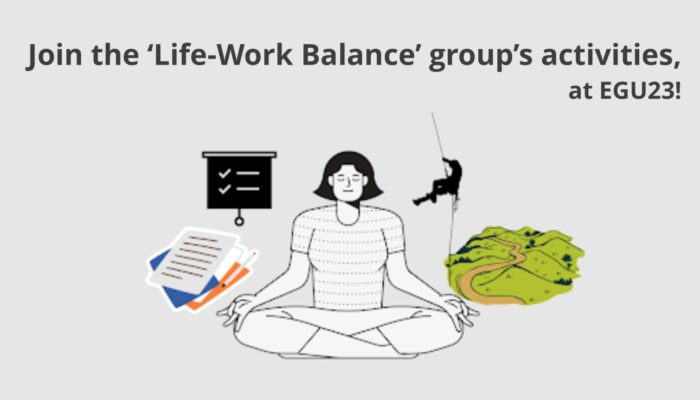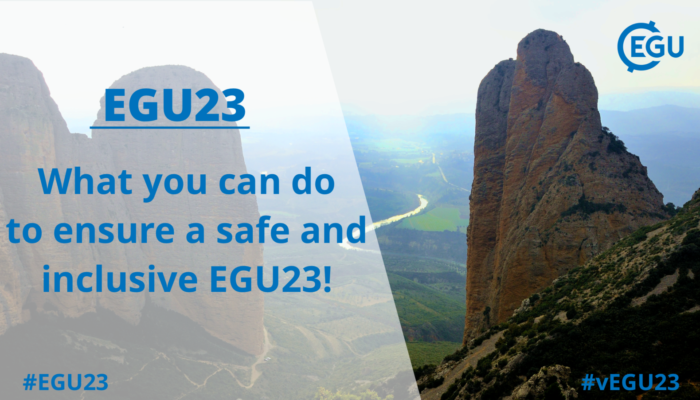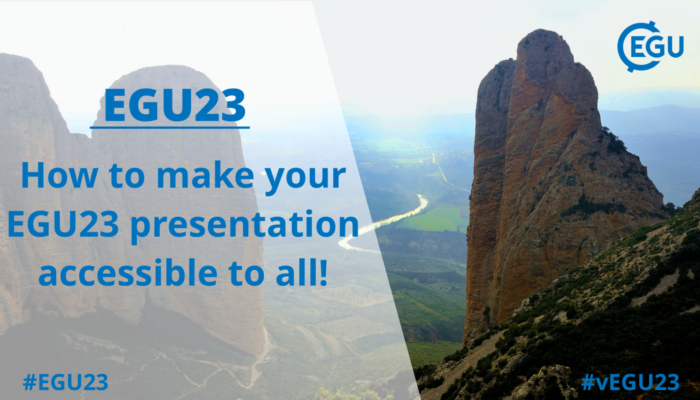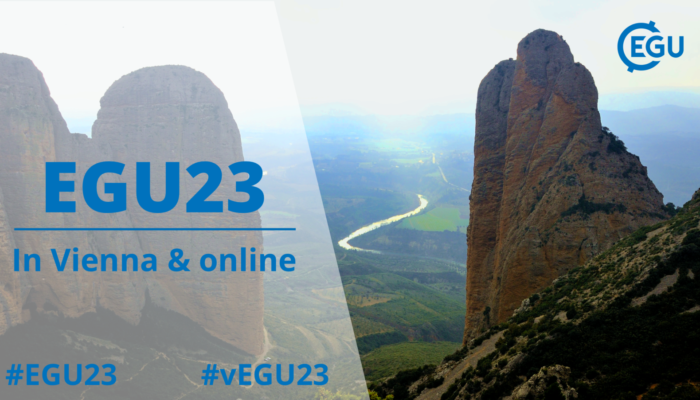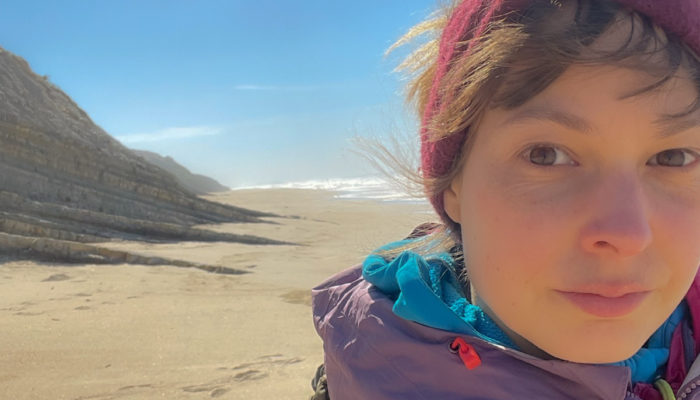Dear fellow scientists (and readers joining us at EGU23!), It’s us again, the “Life-Work-Balance” group of EGU. We are a team of scientists organizing various events related to life-work-balance during the EGU General Assembly and would like to share our experience with you. For this year’s General Assembly we are organizing several short courses and pop-up events to offer some guidanc ...[Read More]
GeoLog
What you can do to ensure a safe and inclusive EGU23!
It is true that academic gatherings like scientific conferences can offer great opportunities for career advancement, such as building stronger networks, highlighting your research, and finding new opportunities for collaboration. Unfortunately, many conferences are not equally inclusive to all (see the image below) and can pose as unsafe environments for presenters and participants. With EGU23 on ...[Read More]
GeoLog
How to make your EGU23 presentation accessible to all
Most people spend their time and effort making their presentation engaging and impactful, but what about accessibility? An accessible presentation takes into account the diverse backgrounds and abilities of the audience, to enable better understanding and recall of the content shared. This is also true for the way we share scientific research: presenters would do well to communicate their research ...[Read More]
GeoLog
First time at an EGU General Assembly? We got you covered!
Europe’s biggest geoscience conference is only 5 weeks away! Each year, the EGU General Assembly brings together over 15,000 researchers, scientists, academics and journalists to discuss and share the latest developments in planetary exploration, Earth observation, polar science, climate change, natural hazards, and much more. And it is held at the Austria Centre Vienna (ACV) which is big enough t ...[Read More]
GeoLog
EGU23 has something for everyone: Sessions on networking, policy, mentoring, jobs & careers
As the 2023 General Assembly materializes on the horizon, it’s a good idea to take stock of what sessions you want to attend in advance of attending the assembly proper. Whilst the scientific sessions provide some of the highlights, EGU23 has a rich programme to tempt you to go beyond – including inline and in-person sessions dedicated to early career scientists (ECS) networking, job and careers, ...[Read More]
GeoLog
GeoTalk: Meet Marisa Storm, Molecular Fossil researcher!
Hi Marisa. Thank you for joining us today! Could you tell our readers a bit about yourself and your research? Hi, I am a geologist and organic geochemist, currently working as a postdoc at the NIOZ Netherlands Institute for Sea Research based on the island Texel. After my geology-focused undergraduate and master studies in Germany at the RWTH Aachen and Heidelberg University, I graduated wi ...[Read More]
GeoLog
EGU23: A hybrid General Assembly with too many benefits to ignore!
Are you planning to attend the upcoming EGU General Assembly – either on-site in Vienna, Austria or remotely as a virtual participant? This year, EGU has decided to take time for science, and encourages you to do the same. For us, this means offering our attendees the “best of both worlds,” through a carefully and creatively curated hybrid conference. For you, we hope this means a ton of benefits ...[Read More]
GeoLog
EGU’s President Helen Glaves and Vice-President Irina Artemieva discuss leadership in science!
For the first time in our history both EGU’s President and Vice-President are women – in fact most of our volunteer senior leadership team is compromised of outstanding women in science, our current President Helen Glaves, our Vice-President Irina Artemieva who will become President at the next General Assembly, and our General Secretary Jane Hart. This year for International WomenR ...[Read More]
GeoLog
Imaggeo On Monday: the EGU Photo Competition – stunning natural phenomena
In 2010 EGU held our first annual Photo Competition at the General Assembly in Vienna. Since then hundreds of photos have been shared on imaggeo by geoscientists and researchers just like you, with a lucky few being selected each year to be highlighted during the meeting and voted on by our members. These images can be of anything to do with geology or geoscience – we get many beautif ...[Read More]
GeoLog
Sign up for EGU’s Mentoring Program: here’s why!
You have been matched! I take a deep breath and click to open the message. Two women from Iran, a Master and a PhD student. Their research interests match mine: geohazards, geomorphology and modeling. I’m filled with pure joy. Being an Iranian woman myself, doing science outside of Iran for over two decades, I feel I am finally returning home. Carrying a backpack filled with knowledge and experien ...[Read More]

